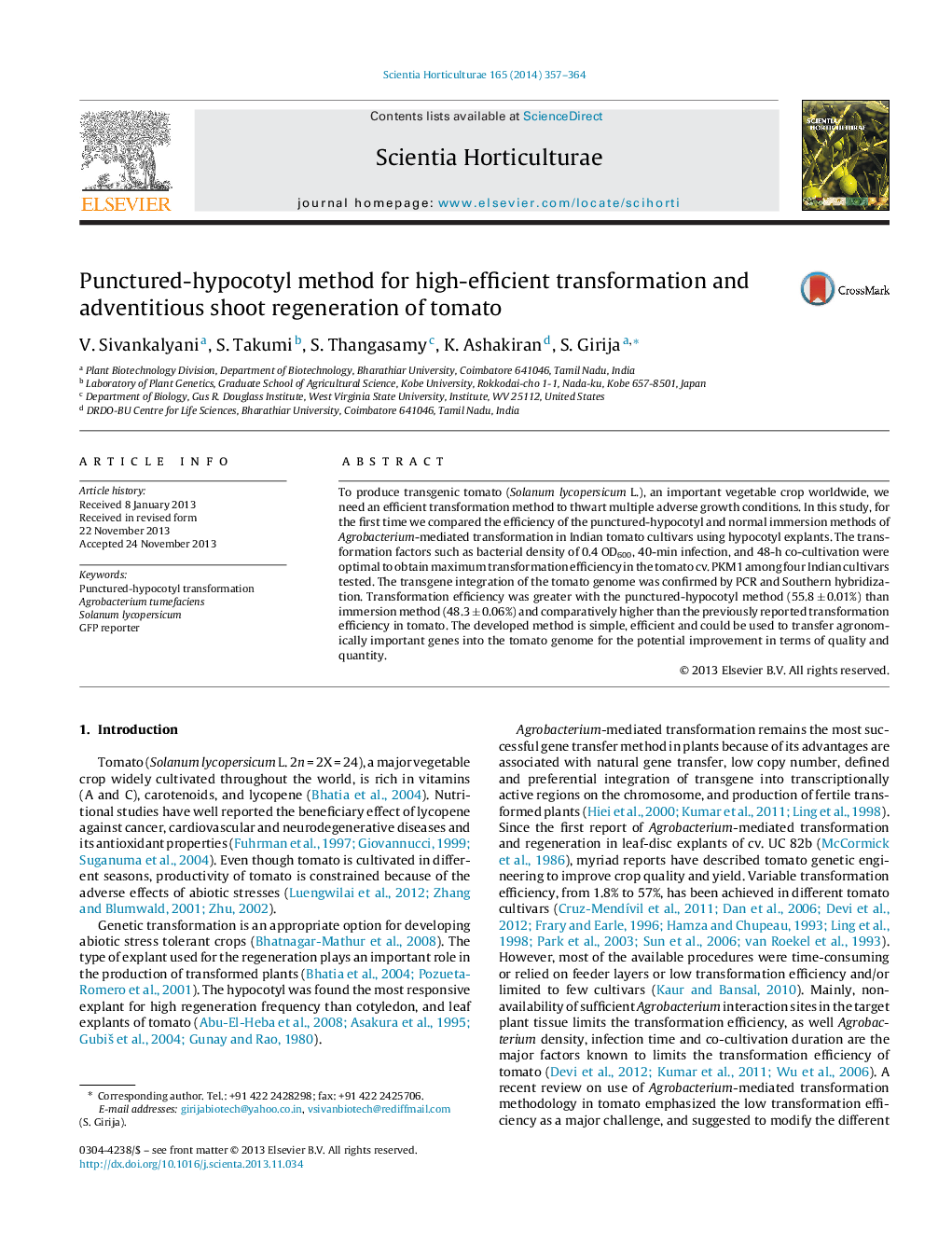| Article ID | Journal | Published Year | Pages | File Type |
|---|---|---|---|---|
| 6407474 | Scientia Horticulturae | 2014 | 8 Pages |
â¢Punctured-hypocotyl and immersion method of transformation was tested in tomato.â¢Transformation efficiency was greater with the punctured-hypocotyl method.â¢Bacterial density 0.4 OD600, 40-min infection, 48-h co-cultivation was optimal.â¢Transformation efficiency was higher in the tomato cv. PKM1.â¢This method is efficient to achieve higher transformation efficiency in tomato.
To produce transgenic tomato (Solanum lycopersicum L.), an important vegetable crop worldwide, we need an efficient transformation method to thwart multiple adverse growth conditions. In this study, for the first time we compared the efficiency of the punctured-hypocotyl and normal immersion methods of Agrobacterium-mediated transformation in Indian tomato cultivars using hypocotyl explants. The transformation factors such as bacterial density of 0.4 OD600, 40-min infection, and 48-h co-cultivation were optimal to obtain maximum transformation efficiency in the tomato cv. PKM1 among four Indian cultivars tested. The transgene integration of the tomato genome was confirmed by PCR and Southern hybridization. Transformation efficiency was greater with the punctured-hypocotyl method (55.8 ± 0.01%) than immersion method (48.3 ± 0.06%) and comparatively higher than the previously reported transformation efficiency in tomato. The developed method is simple, efficient and could be used to transfer agronomically important genes into the tomato genome for the potential improvement in terms of quality and quantity.
